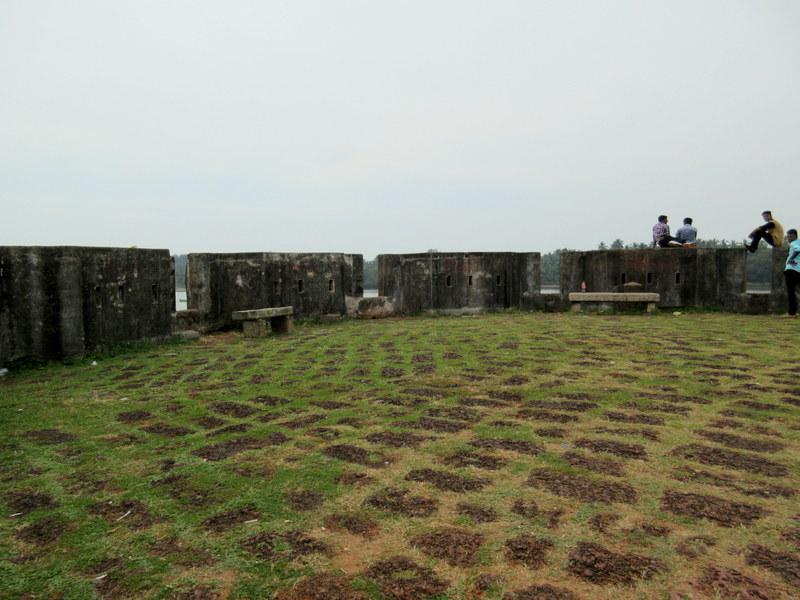Last month, I got extremely busy reporting the 2015 National Premier Championship for ChessBase India from Thiruvarur in Tamil Nadu. Nevertheless, on my way to the host city, I made a pit stop at Thrissur in Kerala, better known as God's own country, although the Keralites themselves scoff at any such reference, to meet a certain kid who is extremely witty outside the chess board and a phenom over it. But more about him later.
Clicking photographs in a moving train with a simple camera, when you are as horrible a photographer (guffaws) as I am, can be a tad difficult. However, here is a small pictorial story for you to enjoy.
I reached Thirssur and it was time to visit Nihal Sarin and his family. Nihal's sister Neha is a bubbly six-year-old child who is as sharp as her elder brother is...
Nihal would be busy with his routine of playing blitz online on multiple chess playing servers, where he would sit and hunt titled players of varied stature. I observed him go about his day, peppering him with questions, asking why he chose specific moves in his games, and so on. The result of my work is detailed in this ChessBase article.
Soon, in the international ChessBase website, you will see a videotaped experiment where Nihal is supposed to solve a study. It is the traditional test ChessBase has been providing to talented youngsters and in the soon to be published article, you come to know the story (involves a famous World Champion) and also see how these talented players fared in the experiment, including Nihal.
I was curious to find out what is the key to his thirst for chess. What is the golden rule...
Clicking photographs in a moving train with a simple camera, when you are as horrible a photographer (guffaws) as I am, can be a tad difficult. However, here is a small pictorial story for you to enjoy.
 |
| I caught a (fairly) early morning passenger train from the Mangalore Central station |
 |
| The water is so clear that from certain angles, you can actually see the stuff beneath! |
 |
| Light doing its job |
 |
| The railway stations in Kerala are not as glitzy as the ones in other states |
 |
| However, as in any other state, crossing tracks remains a national hobby |
 |
| The train met a colleague mid-journey |
Kerala's palm trees are pasted throughout the landscape!
One remarkable feature of the railway line plummeting south in Kerala is this...
Yes, the line runs over an uncountable number of rivers, parallel to the Arabian Sea!
And it is endless! You can actually see the sea and the rivers meeting...
And some places like Mahe, which is actually a part of Pondicherry, offers a dock to witness the trains pass, river flow, right into the sea ahead
I visited Mahe for the first time in November 2013, a day after Anand lost his third game at the Chennai World Championship with Nf1??. Until that day, I never knew that a part of Pondicherry, adjoining the Bay of Bengal, which is actually situated near Chennai in Tamil Nadu, was on the other side, in Kerala adjoining the Arabian Sea. More about this and the story behind how I happened to land here in 2013 later, in some future article.
 |
| Anyway, the pristinely land managed to capture my imagination |
Neha with her father Dr. Sarin Abdulsalam
I reached Thirssur and it was time to visit Nihal Sarin and his family. Nihal's sister Neha is a bubbly six-year-old child who is as sharp as her elder brother is...
White (some GM) is threatening to promote next move and with barely seconds left to calculate, Nihal (Black) saved the game with the simple...
Soon, in the international ChessBase website, you will see a videotaped experiment where Nihal is supposed to solve a study. It is the traditional test ChessBase has been providing to talented youngsters and in the soon to be published article, you come to know the story (involves a famous World Champion) and also see how these talented players fared in the experiment, including Nihal.
I was curious to find out what is the key to his thirst for chess. What is the golden rule...
I saw that the golden rule is, there is no golden rule
































